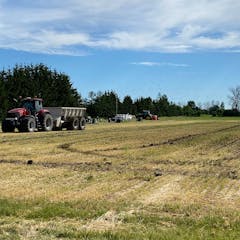
Articles sur Microplastic pollution
Affichage de 1 à 20 de 25 articles

Understanding how plastic pollution moves in rivers is key to effective cleanup strategies.

Nanoplastics are the smallest microplastics, far narrower than a human hair. Very little is known about their composition, structure or how they break down in the environment.

Pollution on land inevitably ends up in the sea. Policy makers must stop working in silos and instead consider the indirect consequences human impacts on land have for marine environments.

The level of microplastic pollution in Osun River may be the highest in the world. Banning single-use plastics may help.

Microplastics are created when everyday products – including clothes, food and beverage packaging, home furnishings, plastic bags, toys and toiletries – degrade.

We sampled sewage sludge from 13 wastewater treatment plants across three states. We found every resident adds microplastics to farmland, in dried sewage sludge (biosolids) used as fertiliser.

The River Nile is contaminated with microplastics.

Five reasons to avoid glitter, even on Christmas cards or baubles.

Media coverage of the dangers of plastic pollution can distract from what is actually needed, says an author.

United Nations efforts to advance a global treaty on plastic pollution echo past multilateral agreements that tackled ozone layer depletion and acid rain.

New research shows that relatively large microplastic particles can make their way into the body tissues of marine mammals.

We need to pay close attention to the potential impacts that high levels of microplastics might have on environments and find ways to reduce microplastic levels in Canada’s wastewater stream.

New research shows that Americans may have absorbed public messaging about the importance of recycling too well.

Researchers even found textile fibres in very remote lakes with limited human presence.

Inflating your cars’ tyres properly isn’t just good for your bank account - it can minimise your environmental footprint too.

Researchers took samples of the River Thames for two years to track levels of microplastics.

Many marine animals, birds and fish are ingesting plastic. New research identifies the first named health effect from it.

It’s impossible to escape exposure to microplastics and a new study confirms they’re in household dust around the world. But the health risks appear surprisingly low, and vacuuming makes a difference.

The Vaal River, which serves more than 11 million people, is considerably polluted with microplastics.

Nigeria generates 2.5 million tonnes of plastic waste yearly. Research and public enlightenment can help address the problem.
